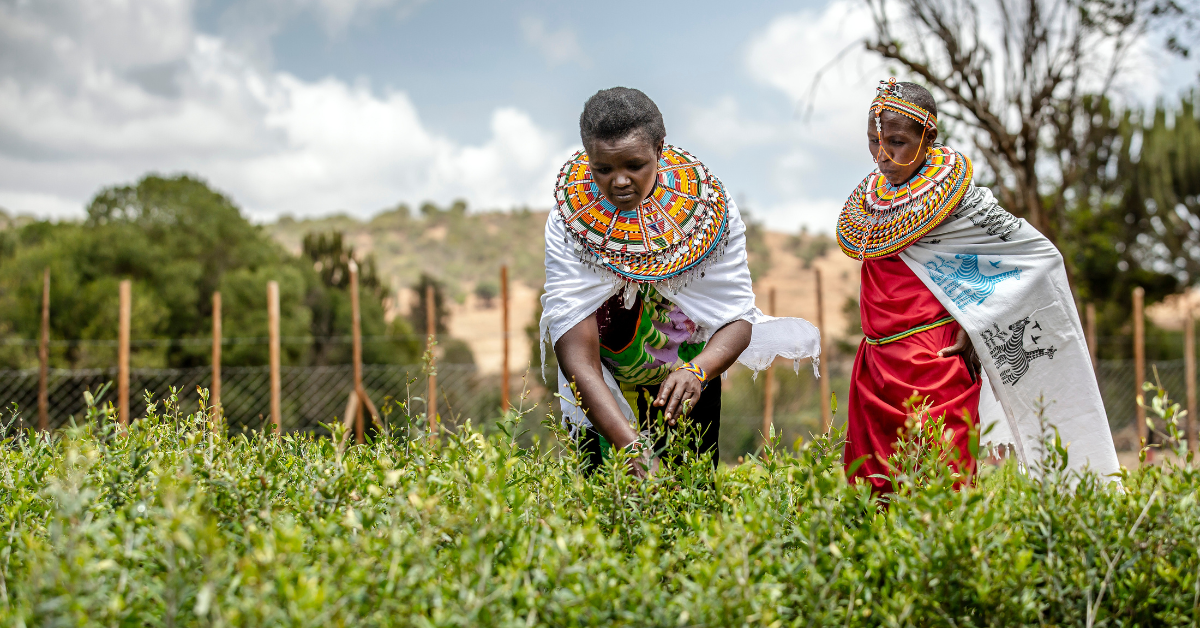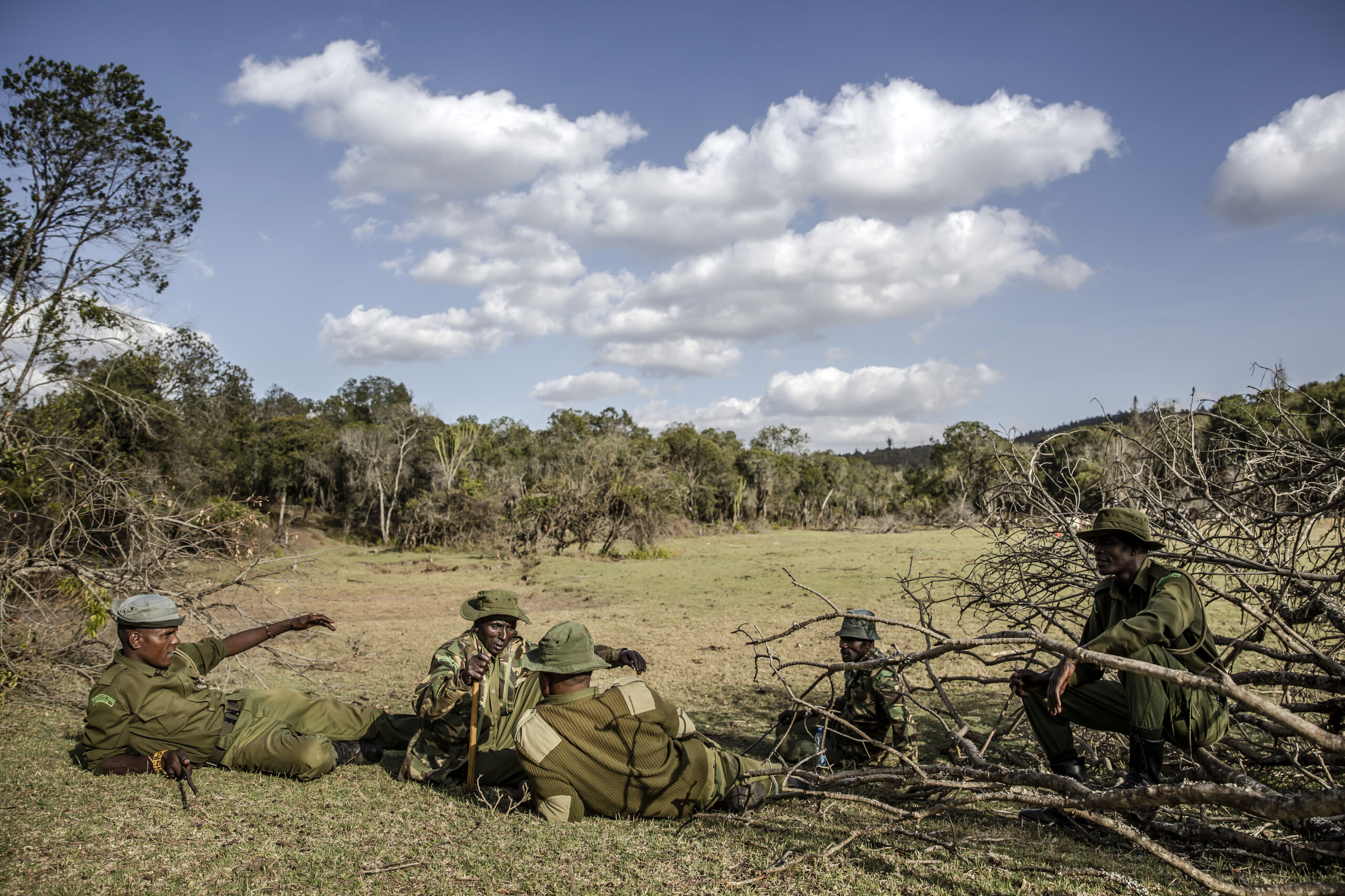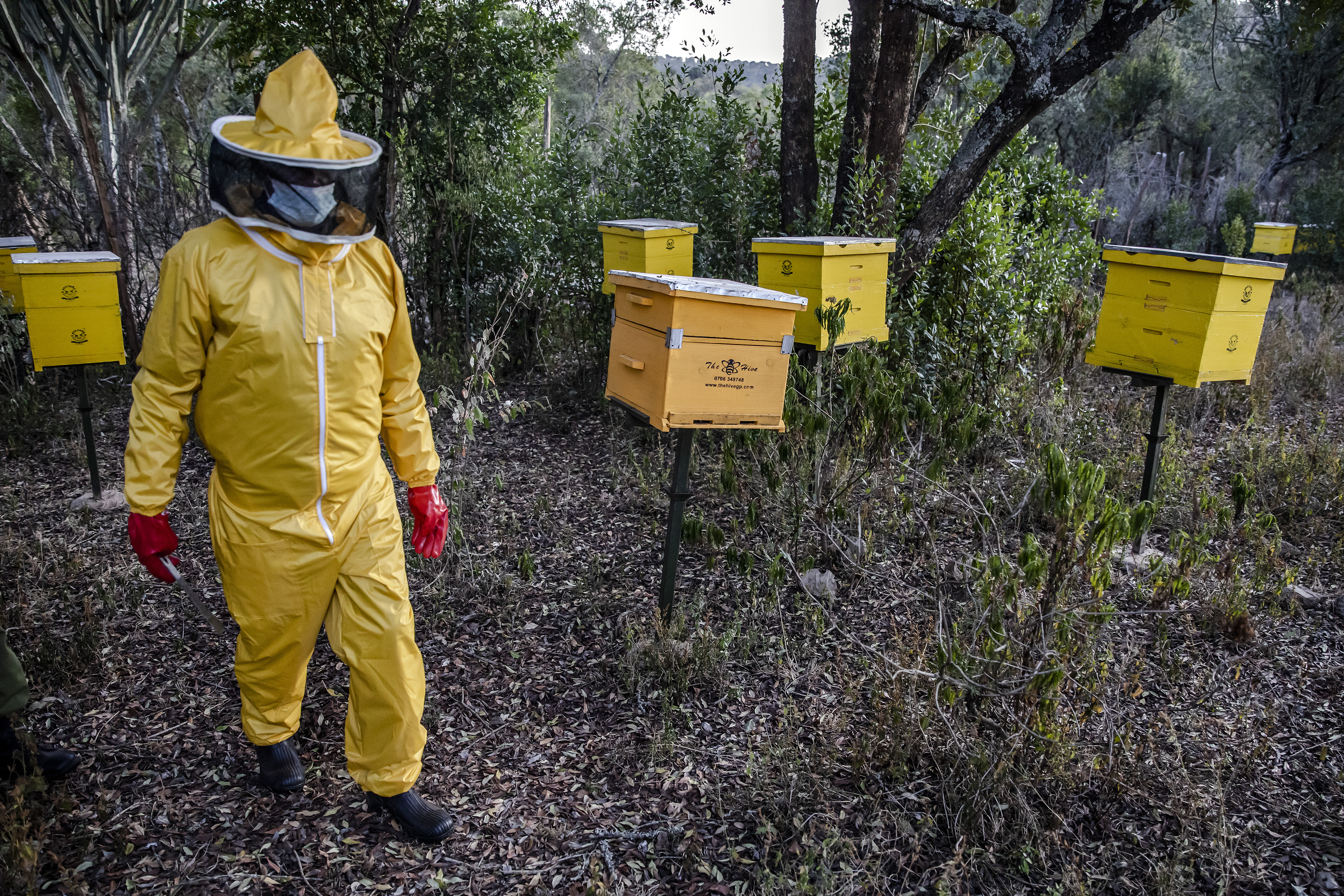“We paid the price”: How a voluntary forest restoration in Kenya ended a decades long security problem
- After occupying the forest for over three decades, the Kirisa community is now championing its restoration and reaping the benefits.

In 2000, together with his three brothers, Jeremiah Chepkore moved into Kirisia forest from a neighbouring village 10 kilometres away. After a whole day of trekking, the family made it to the forest, a place they would call home for the next 19 years. According to the 56-year-old Kenyan, they were allocated five acres of forest land by people he described as forest officials in exchange for five cows.
“Our elder brother convinced us to make the journey into the forest,” Chepkore recalls. “We only had a one-acre piece of land to share among three brothers, we had no option than to leave our village and join the many others who had already settled in the forest.”
The father of four says that the search for grazing and farming land and the ease of settling in the forest made them move into the forest. “We carried along our livestock and household items and set for the journey at night to avoid detection by the few government operatives who were then present in the area.”
Mary Nairesia, 52, another former settler in the forest, joined tens of her neighbours who moved into the forest in 1991 in search of farming land. She was only 20 years and then a mother of one. Today, she is a mother of five and notes that the fertile forest land attracted them to start farming deep inside the forest before slowly settling in.
“People moved into the forest in groups depending on the village they came from. Our group had some 200 people, [the] majority being women,” Nairesia says. “We started by subdividing the forest land for farming because there were no government forest rangers guarding the forest.”

Nairesia adds that charcoal burning, logging of trees, beekeeping and hunting of wild animals were also lucrative deals inside the forest, things she admits led to the destruction of the forest ecosystem.
However, in 2019, Chepkore and Nairesia were among the ten thousand ‘illegal’ settlers who decided to voluntarily vacate the forest and relocate to alternative pieces of land allocated to them by the government. This was a result of a series of environmental conservation training for the community by a group of conservationists.
“At first we were reluctant to leave the forest, but after a series of sensitization sessions, we saw the sense in it and understood why it was important to protect the forest,” Chepkore says.
The Kirisia community from Samburu County, 400 kilometres north of Kenya’s capital Nairobi, then embarked on a restoration drive to save the degraded and dying forest. To this effect, Kirisia’s Community Forest Association (CFA) was created. According to the association’s chairman, Douglas Leboiyare, their focus is on mitigating the effects of climate change like prolonged droughts that have ravaged the region.
The destruction of the forest water catchment area through human settlement led to the drying of rivers and prolonged drought seasons, something that resulted in hunger and communal conflicts over water and animal pasture.
“As a community, we destroyed the forest and paid the price. Our rivers run dry, our food stores run empty because our land was ravaged by unending drought,” Leboiyare says.
According to Leboiyare, excessive and uncoordinated livestock grazing, charcoal burning and logging had for decades threatened the existence of the forest which supports over 10,000 households.
Bringing Forest Back to Life
Before the Kirisia community voluntarily moved out of the forest and formed their forest association, the government had on many occasions unsuccessfully tried to forcefully evict the settlers from the forest. But interventions from community leaders and non-governmental organisations eased the process.
Chepkore and other settlers were offered alternative livelihoods and sources of income, an opportunity that made them agree to not only leave the forest but also partake in its restoration.
“By breathing life back into the forest, we revived water sources that had dried up. The forest is once again a source of fruits, traditional medicine and pasture for our livestock,” Leboiyare says.
Chepkore adds that had they not made the “wise decision to restore and conserve the forest,” they would “have no life by now.”
The Food and Agriculture Organisation (FAO) and government agencies including the Kenya Forest Service, the Ministry of Environment and Forestry, the Kenya Water Towers Agency, the Kenya Forestry Research Institute, the County Government of Samburu, and the Green Belt Movement offered technical and financial support to the community-led project.
The community kicked off the Kirisia forest restoration project in December 2019 by planting the first 11,000 tree seedlings. With a total coverage of 92,000 hectares, Kirisia forest is among the largest water towers in Kenya according to Julius Kamau, Kenya’s Chief Conservator of Forests.
Kamau says 30,000 hectares of the forest had been destroyed at the time the restoration drive began. He credits the successful rebirth of the forest to the voluntary movement out of the forest by the community and the sustained restoration drive, which he says is giving the forest back its glory.
Between 1973 and 2015 the forest had lost 20% of its tree cover. To date, the Kirisia community has managed to restore 11,000 out of the 30,000 hectares of the destroyed forest with 80,000 tree seedlings being planted since 2019.
Charles Ochieng, the Samburu County Forest conservator, notes that community scouts have been critical to the success of the initiative through regular patrols within the forest. “We have plans of scaling up tree planting to realize our target of 450,000 new tree seedlings.”

Reaping the Fruits
FAO Kenya Representative Carla Mucavi says efforts by Kirisia’s Community Forest Association have helped attain “better food production, enhanced nutrition and improved life for the community.”
The government of Kenya granted the community the right to use the forest sustainably, leading them to practice agroforestry, beekeeping and even grazing within the forest. A total of 1300 community members are engaged in controlled beekeeping inside the forest under the Samburu Beekeepers Cooperative Society.
John Lelesit, chairman of the Samburu Beekeepers Cooperative Society, says the community can generate income from selling honey, a situation he admits has changed the economic fortunes of those involved. Today, the community has more than 400 beehives in the forest.
According to Lelesit, the community has been able to enhance its food and nutrition through honey production and forest farming. Regeneration of water springs and rivers, enhanced fodder for livestock and forest fruit farming have also boosted the economic well-being of the Kirisia community.
“Our young warriors are busy inside the forest keeping bees and farming,” Lelesit says. “They have no time for war or cattle rustling and this has put an end to communal conflicts which caused many deaths and destruction of property.”
Tourism is also booming in the area, with wild animals including elephants which had disappeared for years finding their way back to the restored forest.
According to Nairesia, the community and especially women are registering many benefits of being part of forest conservators as opposed to when they participated in destroying it.
“I’m among women engaged in controlled and monitored farming inside the forest,” Nairesia explains. “The government has allowed us to grow African leafy vegetables, fruits, and maize which not only acts as a source of food for our families but also a source of income because we sell the surplus to neighbouring communities.”
Nairesia adds that with increased food production, women can now easily provide a balanced diet to their children, something she says has led to “enhanced nutrition of families.’’
“Currently we don’t have any problem with the forest rangers because we are all friends of the forest,” she says. “We can still access the forest to source for traditional medicine, water and firewood, graze our cattle and practice bee farming inside the forest while at the same time conserving it. What we do not allow is tree cutting and charcoal burning.”
Mariana Kelporen, a mother of six says the restoration of the forest has given them peace as women and helped keep their husbands at home.
“We not only have food for our children, but we also have our husbands at home,” she says. “Initially, they would go for days looking for cattle to steal or following stolen cattle and some would never return.”
Global Award
On October 14, 2022, during the World Food Day celebrations, the small rural Kenyan village made global headlines on the sidelines of the event that was held in Rome, Italy.
The Kirisia Community Forest Association (CFA) won the maiden Achievement Award from the Food and Agriculture Organization (FAO) under the FAO Achievements Awards programme. FAO honoured the Kirisia community forest protection efforts that saw the restoration of a critical forest and water tower.
Launched in 2020, the FAO Achievements Award recognises individuals, communities, and institutions with outstanding performance in the efficient execution of programmes related to FAO’s work. The award focuses on fishery forestry, climate, land and water, animal and plant, and the health sectors.
FAO Director-General (DG) QU Dongyu presented the award to the Kirisia CFA chairman Douglas Leboiyare. Speaking after receiving the award on behalf of his community, Leboiyare mentions that the award was a statement to the whole world that the solution to climate change and environmental degradation squarely lies with communities.
“Communities can save and protect nature if they decide to,” he says. “The same way we take part in destroying nature is the same way we can be part of the solution.”
Edited/Reviewed by: PK Cross, Uzoma Ihejirika, and Caleb Okereke.
Jackson Okata is a multiple award-winning journalist based in Nairobi, Kenya. Jackson boasts of experience in both broadcast, print and online journalism spanning over 8 years. Jackson specializes in agriculture, environment, women and gender, political and governance, tech and innovation, science as well as education stories. Jackson is a fellow of Health Journalism Network, Earth Journalism Network, Internews, Journalists for Human Rights, Africa Centre for Media Excellence (ACME), LIDA Network, YALI Network and Thomson Reuters Foundation






